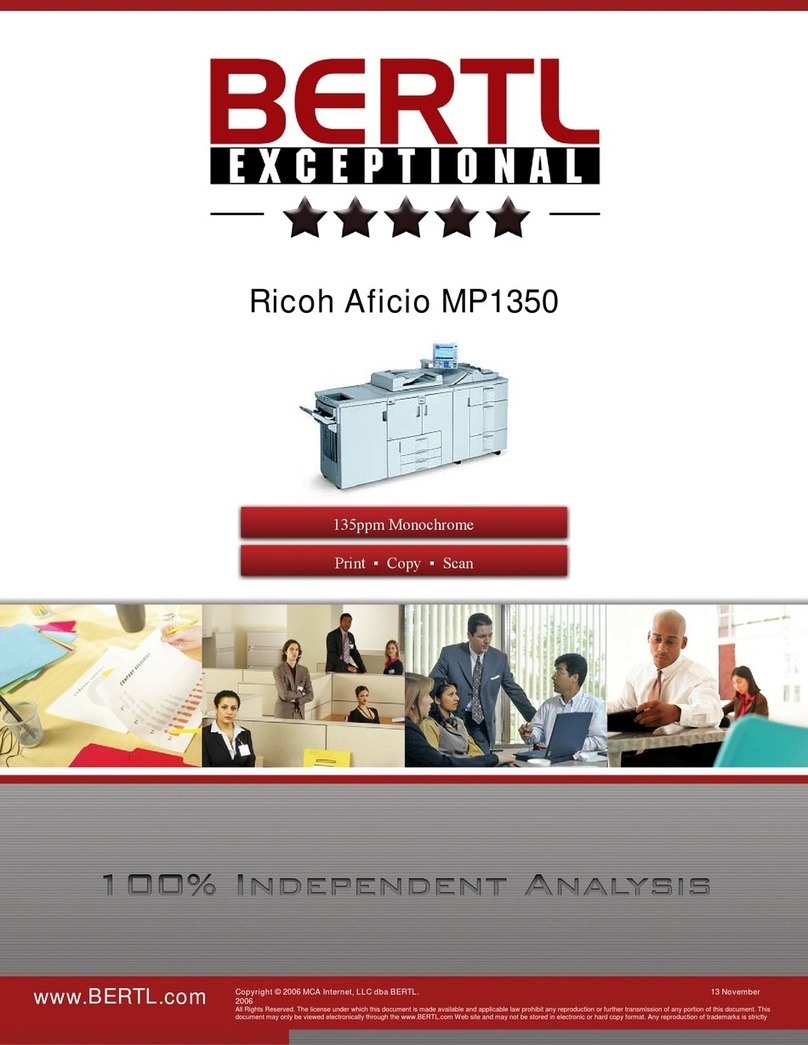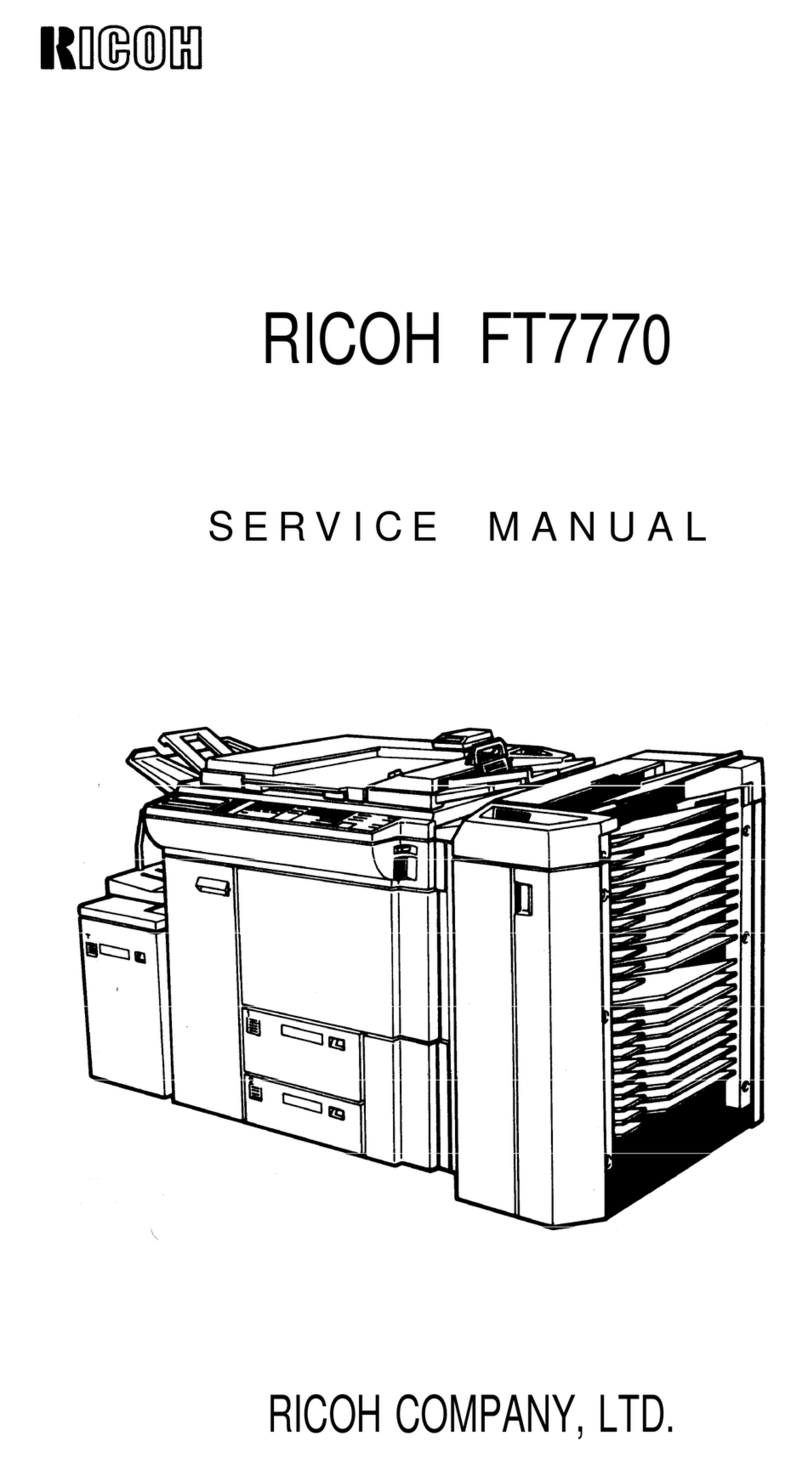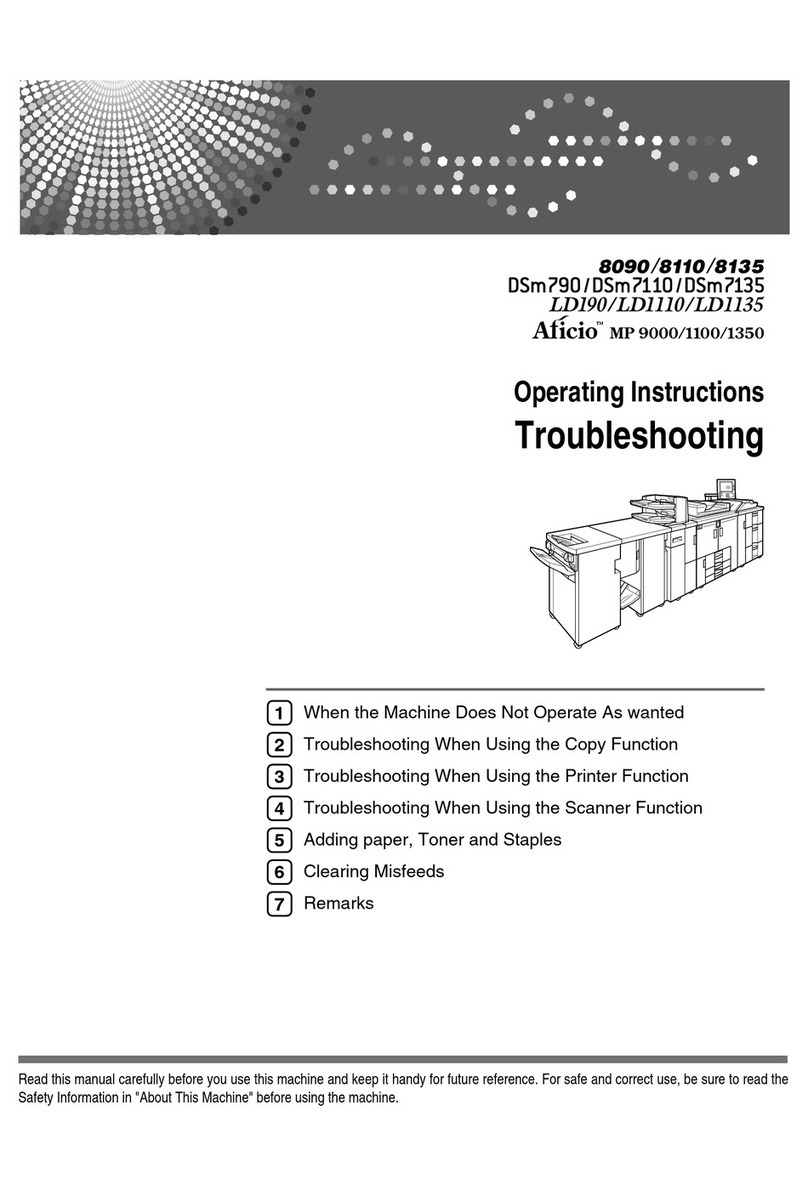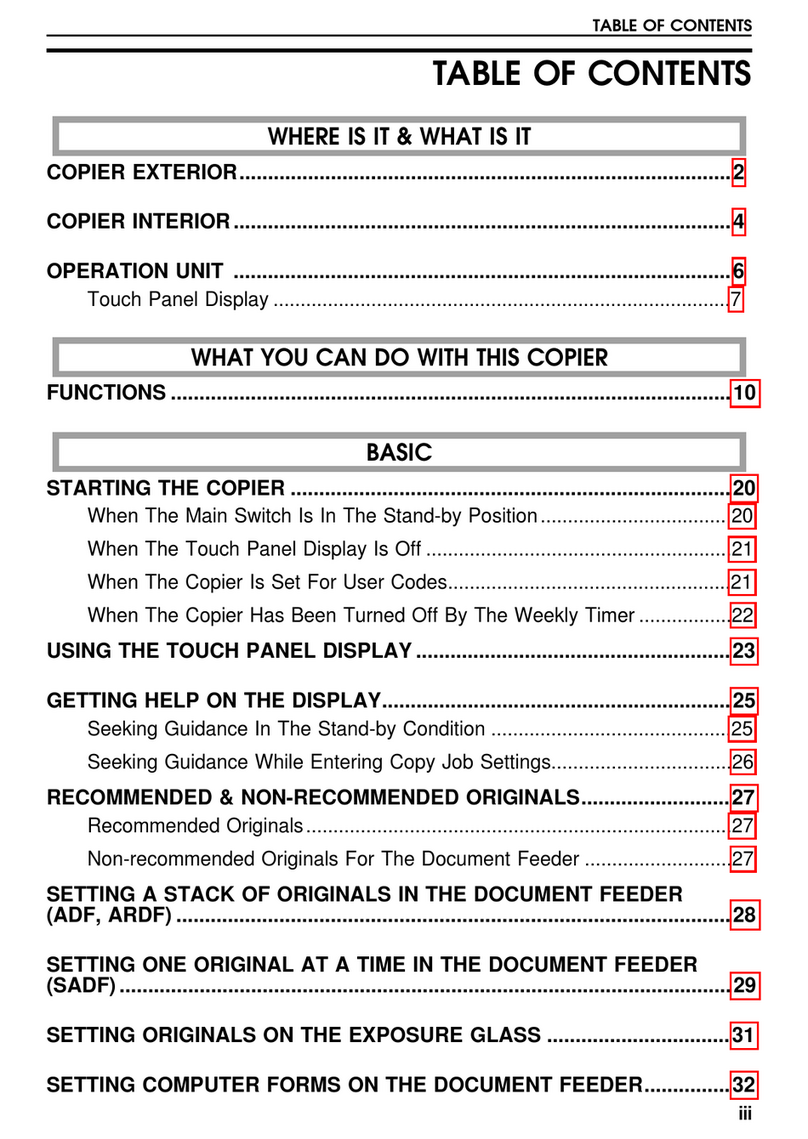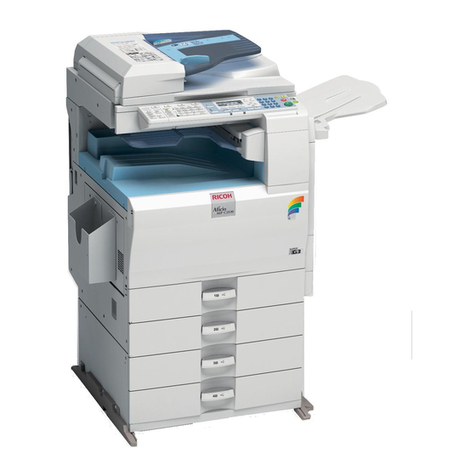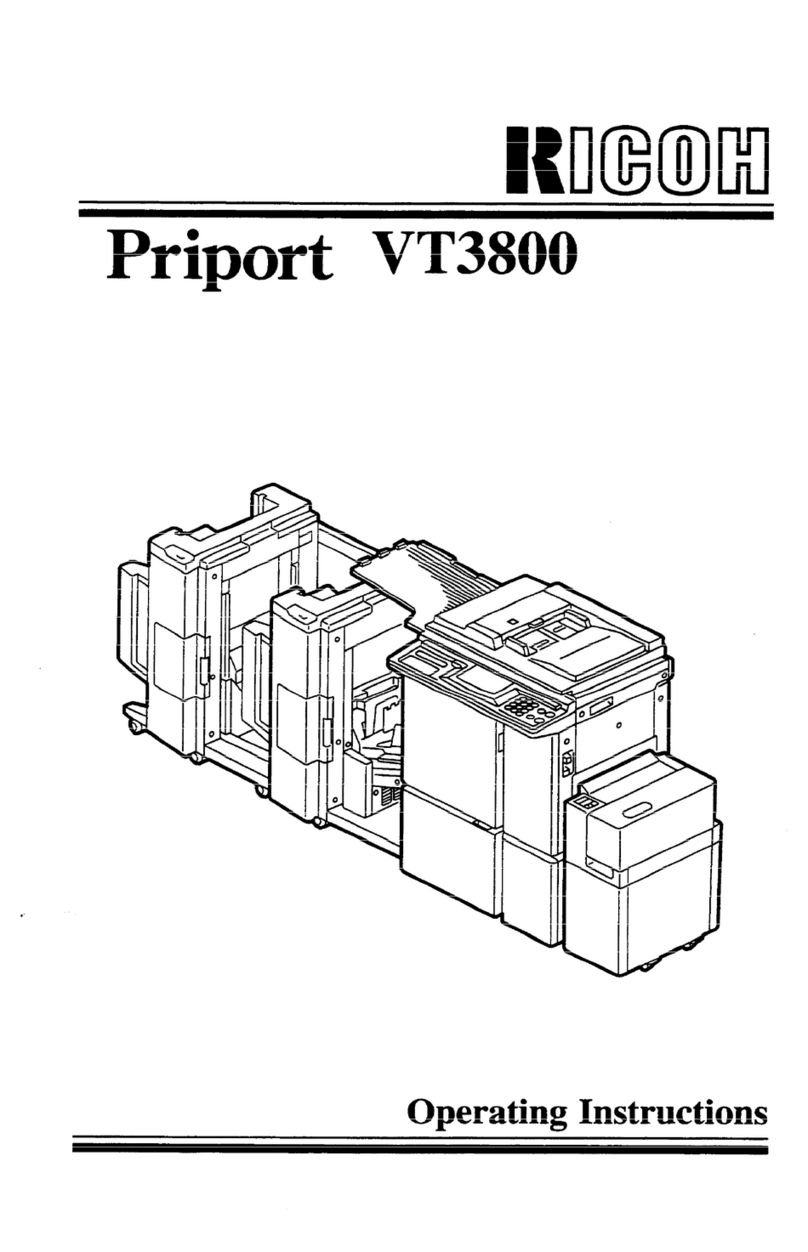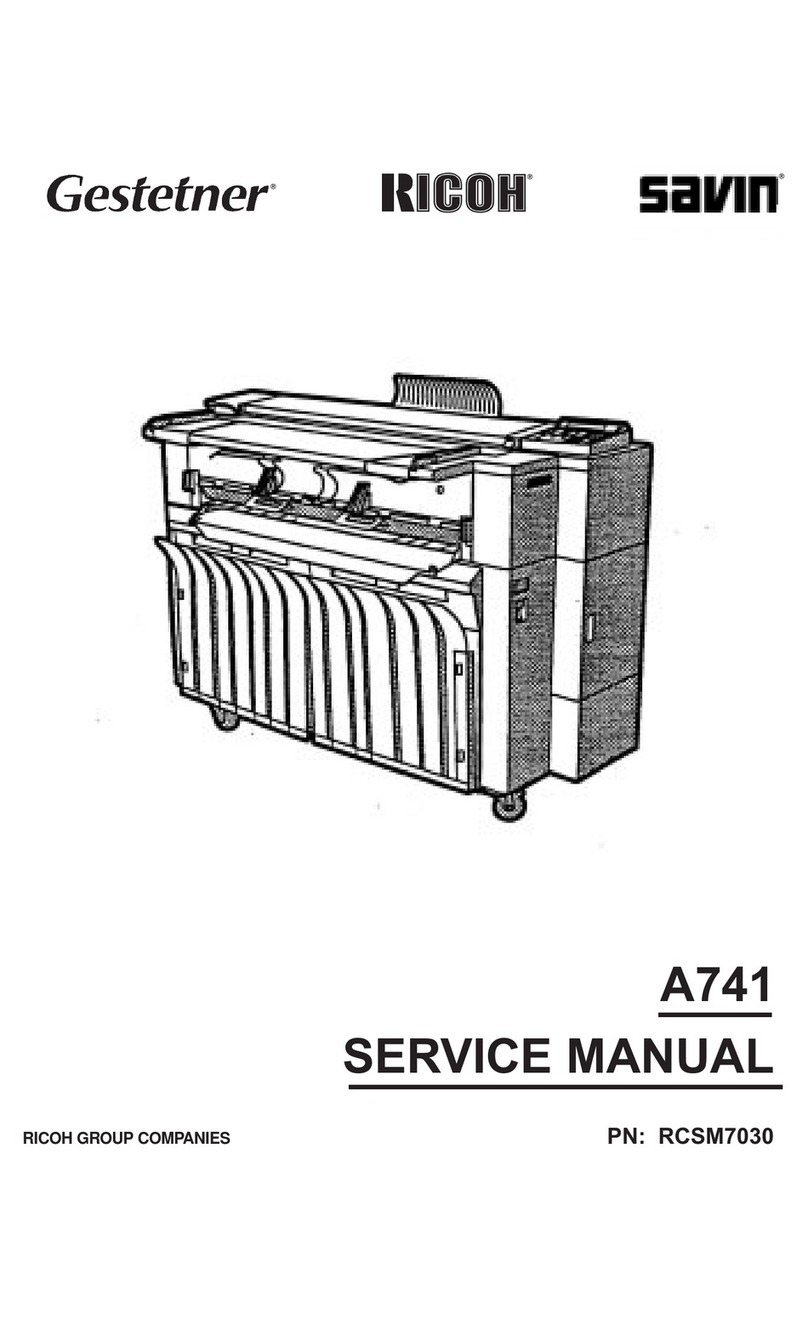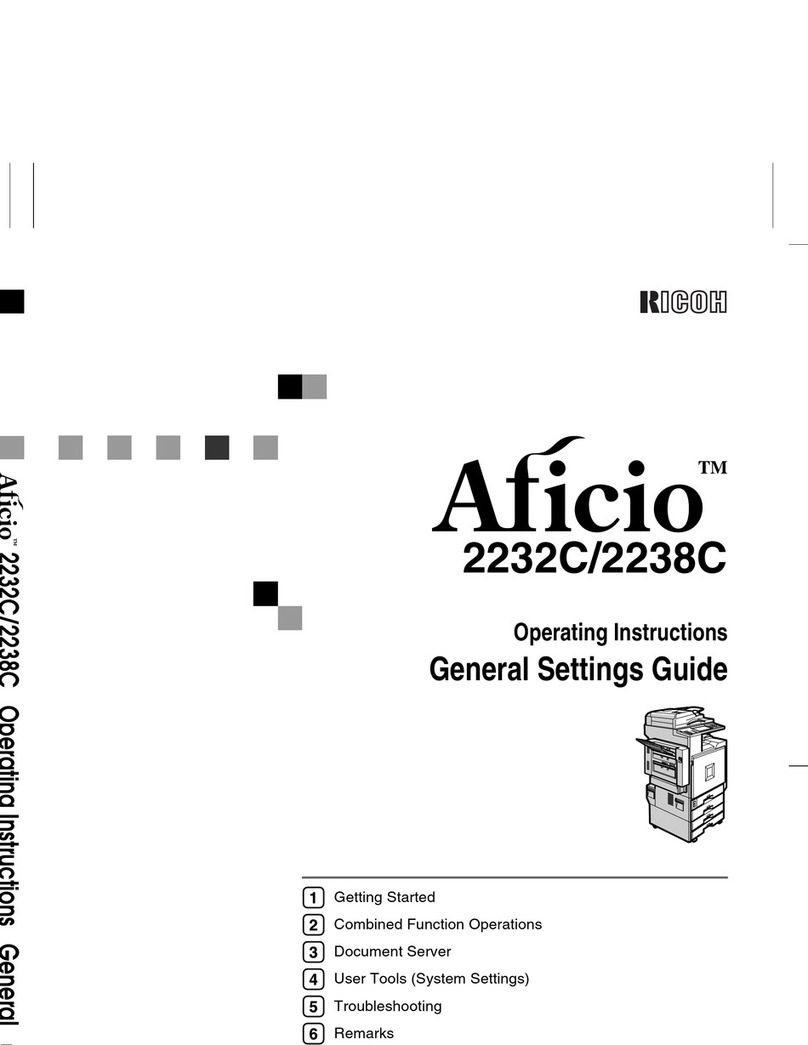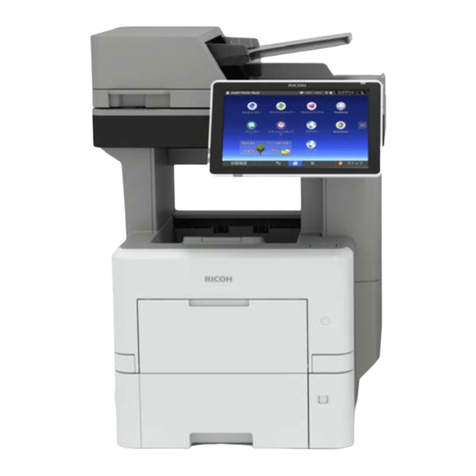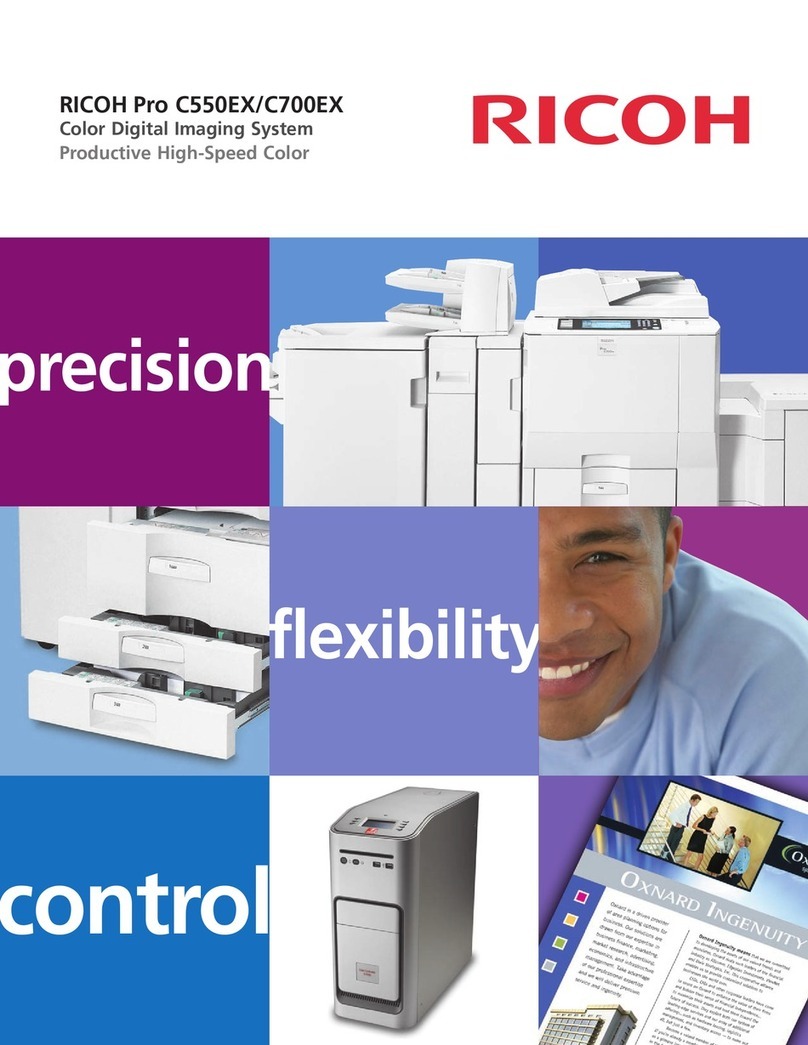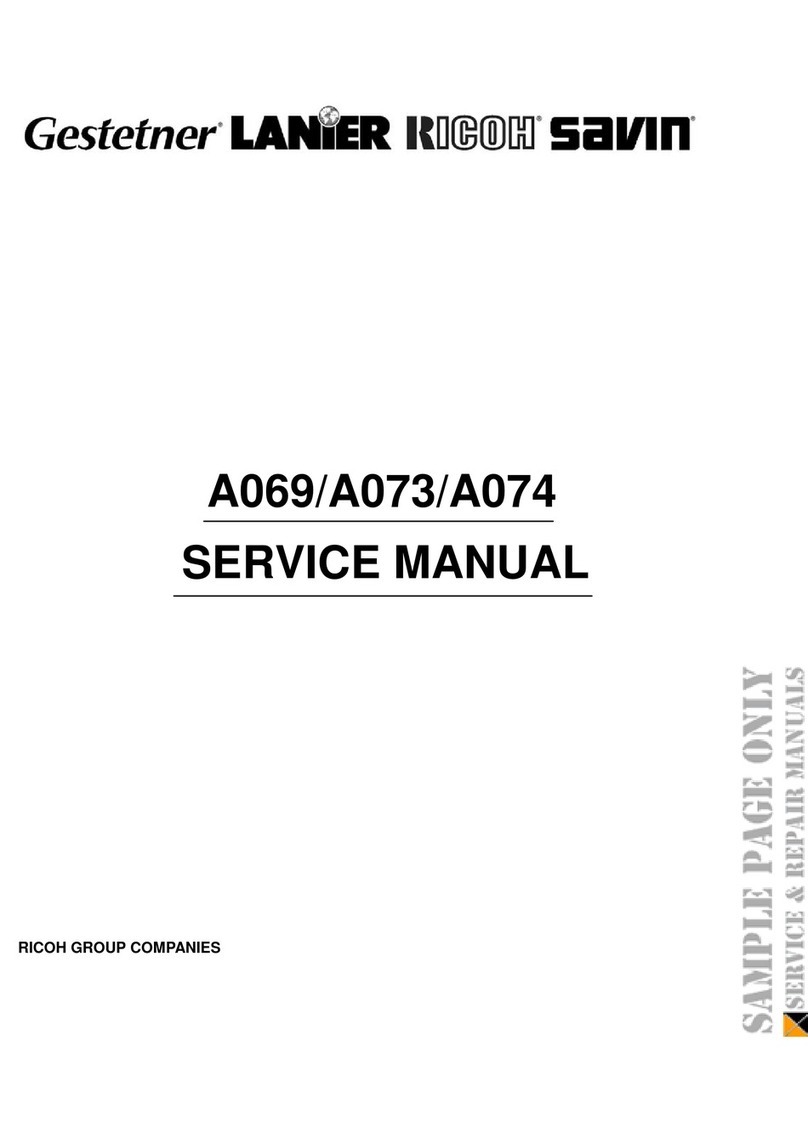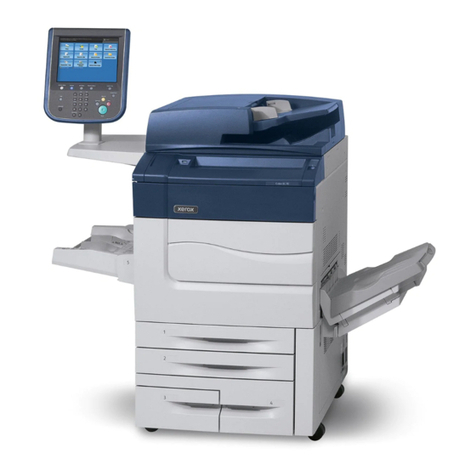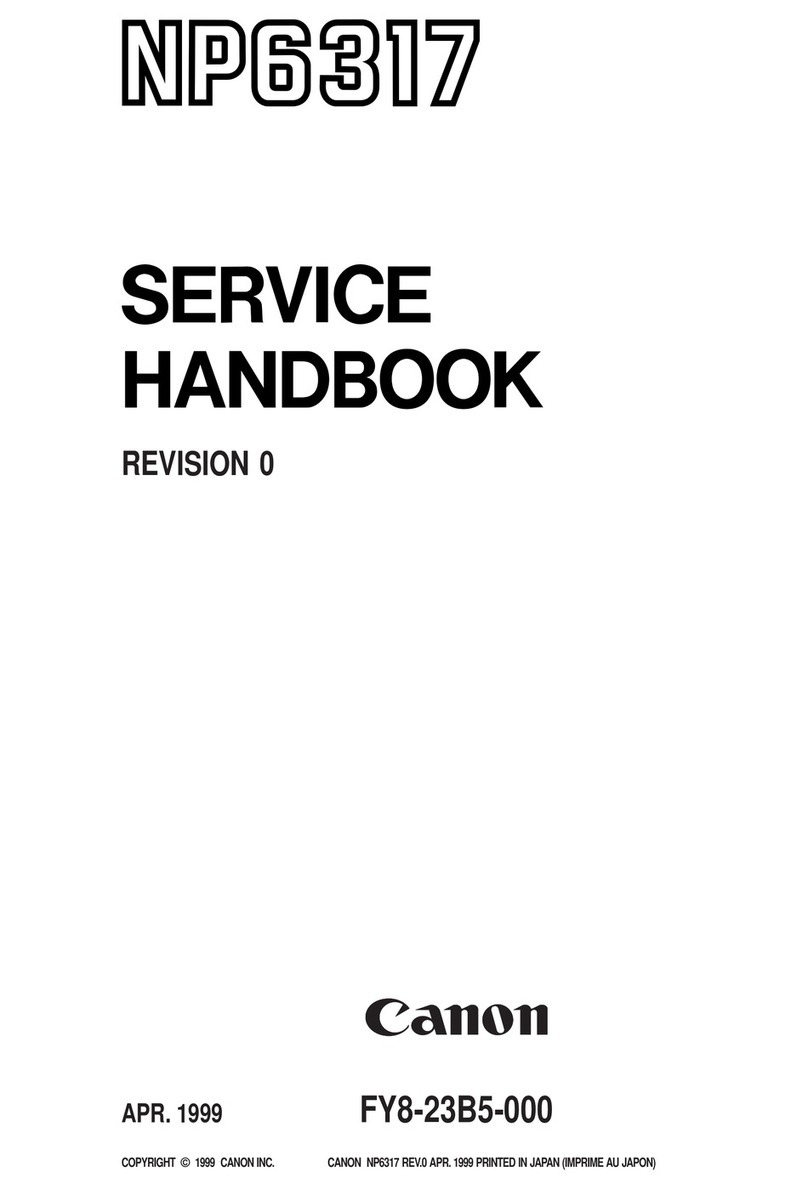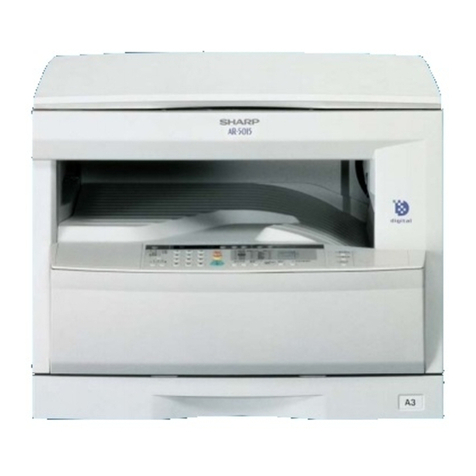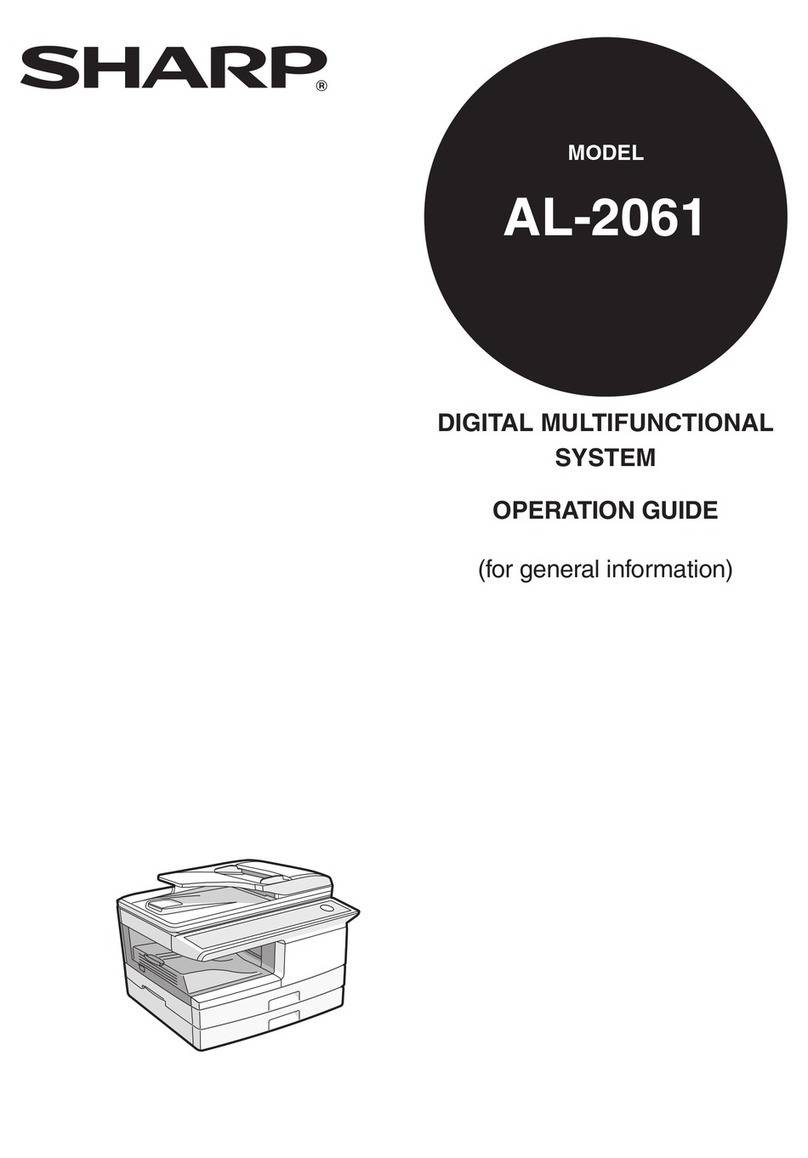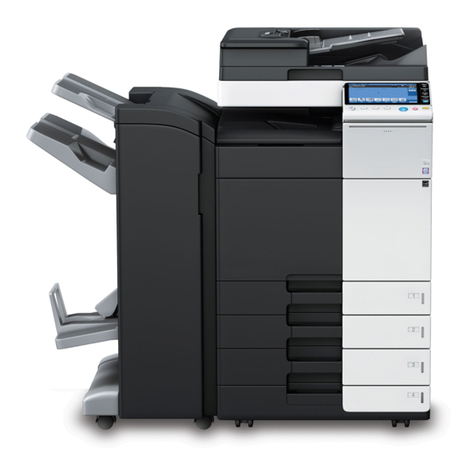
1. DRUM CHARGE
In the dark, the charge corona unit gives a uniform negative charge to the
organic photoconductive (OPC) drum. The charge remains on the surface
of the drum because the OPC drum has a high electrical resistance in the
dark.
2. EXPOSURE
An image of the original is reflected to the drum surface via the optics
assembly. The charge on the drum surface is dissipated in direct
proportion to the intensity of the reflected light, thus producing an
electrical latent image on the drum surface.
3. ERASE
The erase lamp illuminates the area of the charged drum surface that will
not be used for the copy image. The resistance of the drum in the
illuminated areas drops and the charge on those areas dissipates.
4. DEVELOPMENT
Positively charged toner is attached to the negatively charged areas of
the drum, thus developing the latent image. (The positive triboelectric
charge is caused by friction between the carrier and toner particles.)
5. IMAGE TRANSFER
Paper is fed to the drum surface at the proper time so as to align the copy
paper and the developed image on the drum surface. Then, a strong
negative charge is applied to the back side of the copy paper, producing
an electrical force which pulls the toner particles from the drum surface to
the copy paper. At the same time, the copy paper is electrically attracted
to the drum surface.
6. PAPER SEPARATION
A strong positive dc charge is applied to the back side of the copy paper
via a discharge plate, reducing the negative charge on the copy paper
and breaking the electrical attraction between the paper and the drum.
Then, the stiffness of the copy paper causes the paper to separate from
the drum surface.
7. CLEANING
The cleaning blade scrapes the toner off the drum. The collected toner is
recycled.
8. QUENCHING
Light from the quenching lamp electrically neutralizes the drum surface.
Overall
Information
20 December 1996 COPY PROCESS AROUND THE DRUM
1-5

